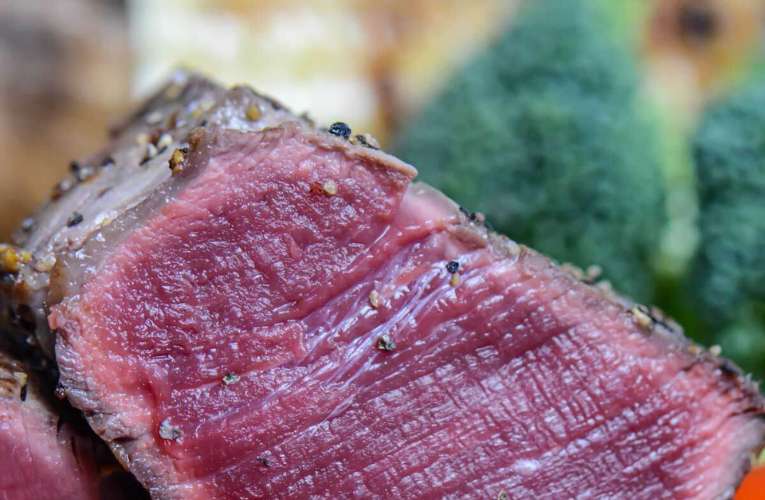Blue rare steak is a cooking technique that results in a steak being cooked at a very high temperature for a short period of time, resulting in a seared exterior while leaving the inside almost completely raw.
This style of cooking is preferred by steak enthusiasts who appreciate the tender texture and intense flavor of the rare meat. Blue rare steak requires precise timing and a high-quality, thick cut of meat to achieve the desired result.
It is important to note that consuming raw or undercooked meat comes with certain health risks and should be done with caution.
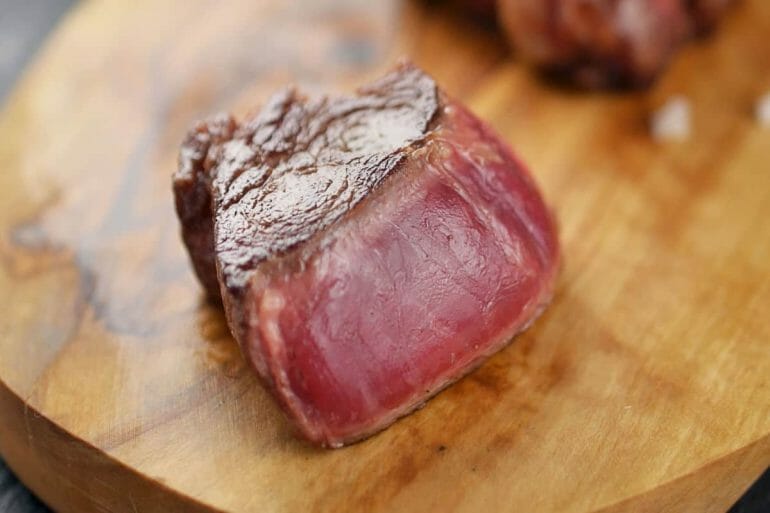
Achieving the Perfect Blue Rare Steak: Cooking Techniques and Tips
If you’re a meat lover, there’s nothing quite like sinking your teeth into a perfectly cooked blue rare steak. This cooking method allows the natural flavors of the meat to shine through while maintaining a tender and juicy texture.
In this section, we’ll explore the cooking techniques and tips to help you achieve that perfect blue rare steak every time.
1. Choosing the Right Cut of Meat
The first step in achieving a perfect blue rare steak is selecting the right cut of meat. Opt for a high-quality, well-marbled steak, such as ribeye or filet mignon. The marbling of fat throughout the meat adds flavor and helps to keep the steak moist during cooking.
2. Preparing the Steak
Before cooking, make sure the steak is at room temperature. This allows for more even cooking throughout the steak. Season the steak generously with salt and pepper or your favorite steak seasoning. Let it sit for a few minutes to allow the flavors to penetrate the meat.
3. Using a Hot Grill or Skillet
To achieve the perfect blue rare steak, you need to cook it quickly over high heat. Preheat your grill or skillet to a high temperature. This will help sear the outside of the steak while leaving the center rare.
4. Cooking Time and Temperature
For a blue rare steak, aim for an internal temperature of around 120°F to 125°F (49°C to 52°C). This will result in a seared exterior and a cool, blue center. Cook the steak for about 2 minutes per side, depending on the thickness of the cut, for a total of 4 to 6 minutes.
5. Resting the Steak
Once the steak reaches your desired temperature, remove it from the heat and let it rest for a few minutes. This allows the juices to redistribute throughout the meat, resulting in a tender and flavorful steak.
6. Slicing and Serving
When slicing a blue rare steak, use a sharp knife to cut thin, even slices against the grain. This helps to maintain the tenderness of the meat. Serve the steak immediately with your favorite sides or sauces.
7. Safety Precautions
It’s important to note that cooking a blue rare steak means the interior of the meat is not fully cooked. This poses a higher risk of foodborne illnesses. Make sure to source your meat from a reputable supplier and follow safe handling and cooking practices to minimize any potential risks.
Achieving the perfect blue rare steak requires careful selection of the meat, proper seasoning, and quick cooking over high heat. By following these tips and techniques, you can enjoy a tender and flavorful steak with a cool, blue center.
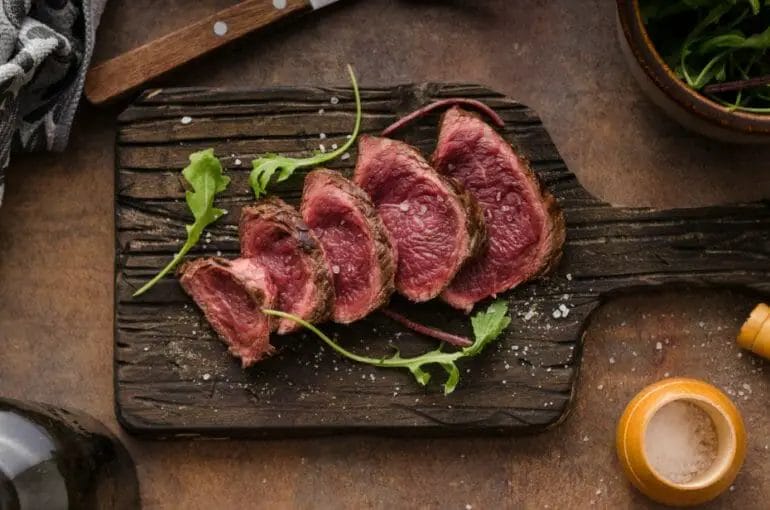
The Science Behind Blue Rare: Why Some Steak Lovers Swear By It
When it comes to cooking steak, there are a variety of cooking levels to choose from, ranging from well-done to rare. One level that stands out among steak enthusiasts is the blue rare.
This cooking method involves searing the outside of the steak while leaving the inside nearly raw. While it may seem controversial to some, there is actually a scientific explanation for why some steak lovers swear by the blue rare method.
The Maillard Reaction
The Maillard reaction is a chemical reaction that occurs between amino acids and reducing sugars at high temperatures. This reaction is responsible for the browning and flavor development in cooked foods, including steaks.
When a steak is cooked using the blue rare method, the high heat quickly sears the exterior of the meat, triggering the Maillard reaction and creating a flavorful crust.
By searing the steak at such high temperatures, the flavors are locked in and intensified, resulting in a unique and intense taste experience. The contrast between the crispy outer crust and the tender, juicy interior is what makes blue rare steaks so appealing to some steak lovers.
The Importance of Temperature
When cooking a blue rare steak, temperature control is crucial. The internal temperature of the steak should reach around 115°F (46°C) to 120°F (49°C).
This low temperature allows the center of the steak to remain rare while ensuring that harmful bacteria are killed off on the surface. It is important to note that cooking steak to a blue rare level requires high-quality, well-handled meat to minimize the risk of foodborne illnesses.
Texture and Mouthfeel
One of the key reasons why some steak lovers prefer blue rare steaks is the unique texture and mouthfeel.
The partially raw and tender center of the steak provides a melt-in-your-mouth experience that is unlike any other cooking level. The lack of prolonged cooking time preserves the natural juices and tenderness of the meat, resulting in a succulent and indulgent dining experience.
Personal Preference and Variations
Like any cooking method, the preference for blue rare steaks ultimately comes down to personal taste. Some individuals enjoy the intense flavors and rare center, while others may find it too undercooked for their liking.
It is important to note that not all cuts of steak are suitable for blue rare cooking. Tender cuts, such as filet mignon or ribeye, tend to work best due to their inherent tenderness and ability to retain moisture.
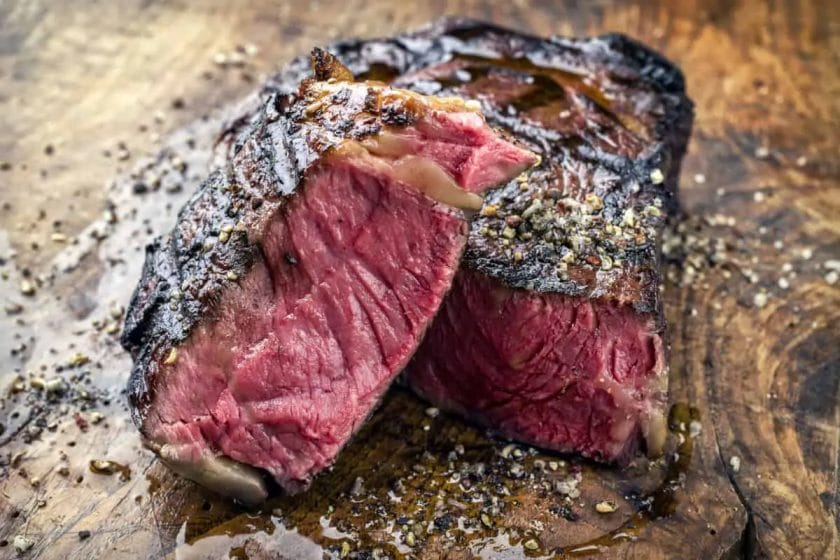
Pairing Flavors: Best Side Dishes to Complement a Blue Rare Steak
When it comes to enjoying a delicious blue rare steak, finding the perfect side dish to complement its rich flavors is essential. The right accompaniment can enhance the dining experience and create a harmonious balance of tastes.
In this section, we will explore some of the best side dishes that pair well with a blue rare steak, taking into consideration the flavors and textures that work best together.
1. Creamy Mashed Potatoes
One classic side dish that pairs exceptionally well with a blue rare steak is creamy mashed potatoes. The smooth and buttery texture of the mashed potatoes contrasts beautifully with the tender and flavorful steak.
The creamy potatoes help to balance out the intense flavors of the blue rare steak, creating a satisfying combination of tastes.
2. Roasted Brussels Sprouts
For a more robust and earthy flavor profile, roasted Brussels sprouts make an excellent choice.
The caramelized outer layer of the sprouts adds a delightful crunch, while the natural bitterness complements the richness of the blue rare steak. Seasoned with olive oil, salt, and pepper, these roasted sprouts add a touch of freshness to the plate.
3. Grilled Asparagus
If you’re looking for a lighter and more refreshing side dish to pair with your blue rare steak, grilled asparagus is a fantastic option.
The smoky charred flavor of the asparagus spears brings a unique element to the meal, perfectly complementing the juicy and succulent steak. Asparagus also adds a vibrant green color to the plate, making it visually appealing.
4. Sautéed Mushrooms
For a rich and earthy side dish that enhances the umami flavors of a blue rare steak, sautéed mushrooms are an excellent choice.
The earthiness of the mushrooms complements the savory notes of the steak, while the tender texture adds a delightful contrast. You can sauté the mushrooms with garlic and herbs to elevate their flavor even further.
5. Crispy Onion Rings
If you’re craving something crunchy and indulgent to accompany your blue rare steak, crispy onion rings are the perfect choice.
The crispy outer layer and the sweet flavor of the onions provide a delightful contrast to the tender and juicy steak. Whether you make them from scratch or opt for a store-bought version, onion rings add a satisfying element to the meal.
6. Horseradish Cream Sauce
A tangy and zesty horseradish cream sauce can bring an extra punch of flavor to your blue rare steak.
The creamy texture and the slight heat from the horseradish complement the rich flavors of the steak, creating a perfect symphony of tastes. You can either drizzle the sauce on top of the steak or use it as a dip for a more customizable experience.
7. Classic Caesar Salad
A classic Caesar salad can serve as a light and refreshing side dish that pairs exceptionally well with a blue rare steak.
The crispness of the romaine lettuce, the saltiness of the Parmesan cheese, and the tanginess of the Caesar dressing create a perfect balance of flavors. The freshness of the salad can help cleanse the palate between each bite of the flavorful steak.
8. Oven-Roasted Potatoes
If you prefer a side dish with a crispy and golden exterior, oven-roasted potatoes are an excellent choice.
Whether you opt for roasted baby potatoes or chunky wedges, the crispy texture of the potatoes complements the tender blue rare steak. Seasoned with herbs and spices, these roasted potatoes add an extra layer of flavor to the meal.
9. Sautéed Spinach with Garlic
For a healthy and vibrant side dish, sautéed spinach with garlic is a fantastic option. The freshness of the spinach and the aromatic garlic bring a burst of flavor to the plate. The earthiness of the spinach pairs well with the richness of the blue rare steak, creating a well-balanced combination of tastes.
10. Tomato and Mozzarella Salad
If you’re looking for a light and refreshing side dish with a burst of freshness, a tomato and mozzarella salad is a perfect choice.
The juicy tomatoes, creamy mozzarella cheese, and fragrant basil create a harmonious blend of flavors that complement the blue rare steak. Drizzled with a balsamic glaze or olive oil, this salad adds a touch of elegance to the meal.
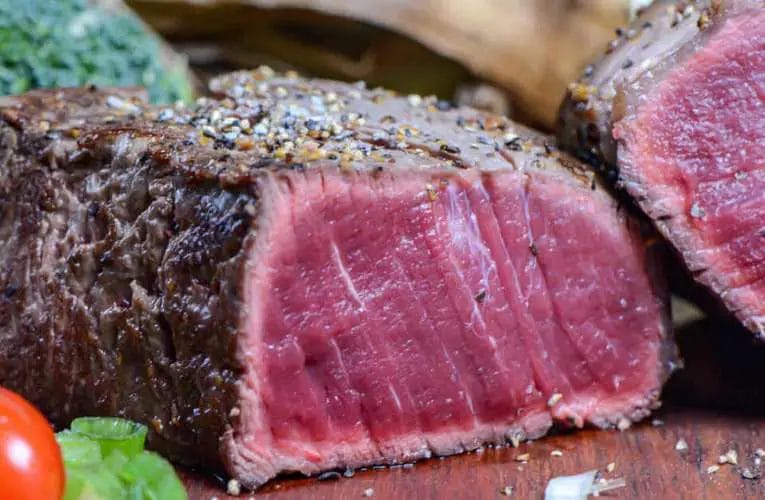
Safe Consumption: Tips for Enjoying Blue Rare Steak without Compromising on Health
Blue rare steak, also known as “bleu” or “rare plus,” is a cooking term that refers to a steak that is cooked very quickly at high heat, leaving the inside nearly raw.
This style of cooking is not for everyone, but for those who enjoy the unique taste and tenderness of a blue rare steak, it is important to ensure safe consumption without compromising on health. Here are some tips to help you enjoy your blue rare steak safely:
1. Choose High-Quality Meat
When it comes to blue rare steak, the quality of the meat is crucial. Look for high-quality cuts of beef from reputable sources. Opt for grass-fed or organic beef whenever possible, as these are generally healthier and free from added hormones or antibiotics.
2. Buy from Trusted Butchers
Purchasing your blue rare steak from a trusted butcher is essential to ensure that the meat is handled and stored properly. Butchers who specialize in high-quality meats are more likely to follow strict hygiene practices and have the knowledge to advise you on the best cuts for blue rare cooking.
3. Proper Handling and Storage
Once you bring your blue rare steak home, it is important to handle and store it correctly. Keep the steak refrigerated at or below 40°F (4°C) until you are ready to cook it. If you are not planning to cook it immediately, store it in the coldest part of your refrigerator.
When handling the steak, use clean utensils and cutting boards to prevent cross-contamination with other foods. Avoid touching the meat with bare hands to minimize the risk of bacterial contamination.
4. Thoroughly Clean Grill or Pan
Before cooking your blue rare steak, make sure your grill or pan is thoroughly cleaned and sanitized. This helps eliminate any potential bacteria that may be present and reduces the risk of foodborne illnesses.
5. Use a Meat Thermometer
Using a meat thermometer is crucial when cooking blue rare steak. It allows you to ensure that the internal temperature reaches a safe level while still maintaining the desired level of rareness. The USDA recommends an internal temperature of 145°F (62°C) for blue rare steak.
6. Let it Rest
After cooking your blue rare steak, it is important to let it rest for a few minutes before slicing into it. This allows the juices to redistribute, resulting in a more flavorful and tender steak.
7. Enjoy in Moderation
While blue rare steak can be a delicious treat, it is important to consume it in moderation. Like all red meat, it should be enjoyed as part of a balanced diet. Incorporate plenty of fruits, vegetables, and whole grains into your meals to ensure you are getting a well-rounded nutritional intake.
8. Consider Food Safety Concerns
It is worth noting that consuming undercooked meats, including blue rare steak, can pose a risk of foodborne illnesses such as E. coli or salmonella.
This is especially true for individuals with weakened immune systems, pregnant women, or young children. If you fall into these categories, it may be wise to avoid blue rare steak altogether.
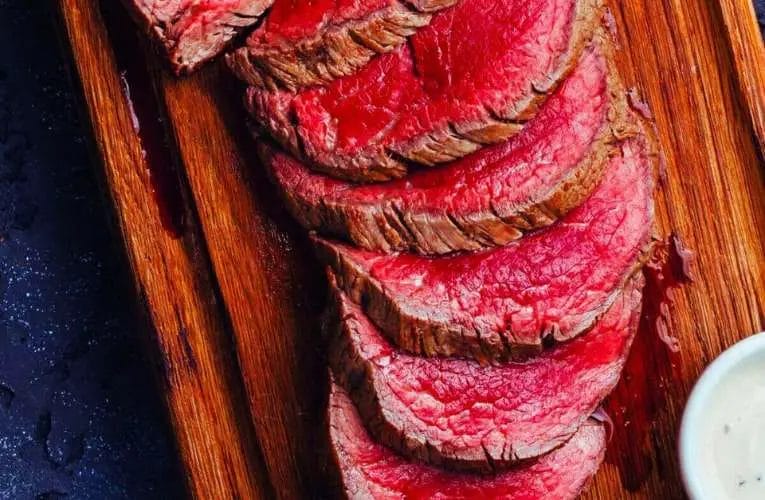
FAQs
What is a blue rare steak?
A blue rare steak refers to a steak that is cooked very briefly, just enough to sear the outside while keeping the center completely raw and cool. It is cooked for a very short time, often less than a minute per side, resulting in a steak that is still red and cold in the center.
Conclusion:
In conclusion, blue rare steak is a culinary term used to describe a steak that is cooked very briefly, resulting in a seared exterior and a cool, almost raw interior.
This unique cooking technique highlights the natural flavors and tenderness of the meat, providing a truly indulgent experience for steak enthusiasts. Whether you prefer your steak blue rare, medium, or well-done, the key is to find the perfect balance of flavor and texture that satisfies your taste buds.
So, next time you’re craving a steak, consider giving blue rare a try for an unforgettable dining experience.

